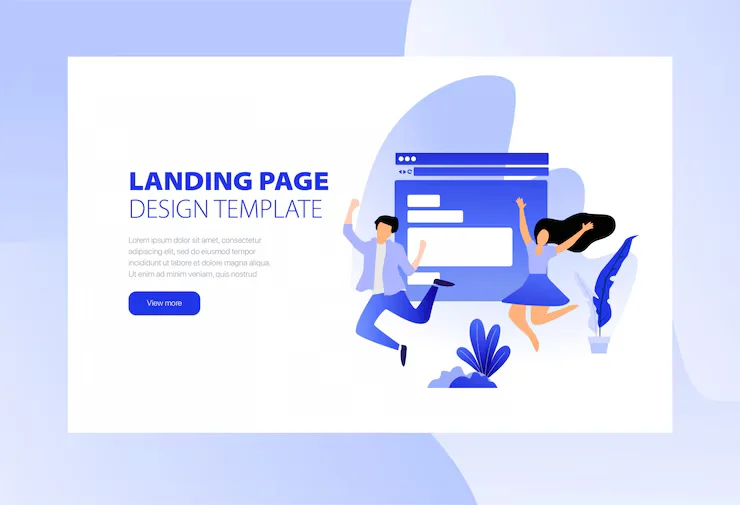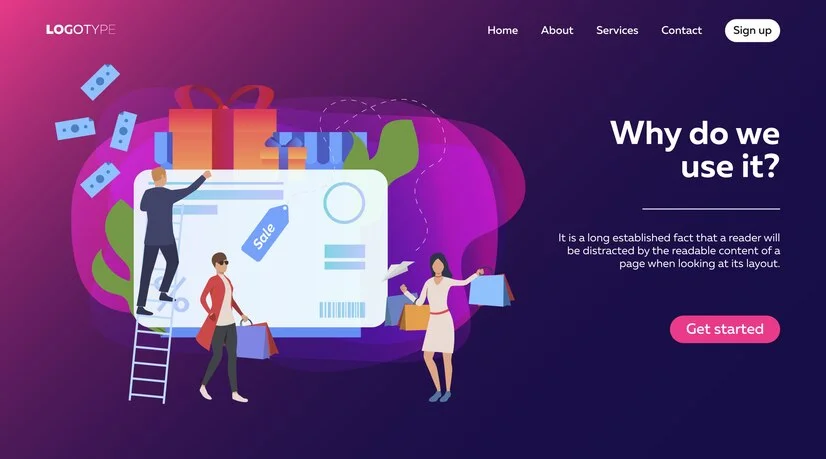Home / Blog


A landing page serves as the first point of contact for visitors, making it essential to design it effectively to maximize conversions. The goal of any landing page is to guide visitors toward a specific action, whether it’s signing up, making a purchase, or requesting a service. Let’s explore the essential landing page features that can significantly improve conversion rates and ensure your website delivers optimal results.
When you think about digital marketing and online business success, landing pages often take center stage. After all, they are where the magic happens — the point where your audience takes action. Whether you’re gathering leads, making sales, or simply spreading awareness, a well-crafted landing page can make all the difference in converting visitors into loyal customers.
In this article, we will break down the essential landing page features that every high-converting page should have. These tips are beneficial for anyone working on improving their digital presence — from business owners to marketers. Whether you’re creating your first landing page or optimizing an existing one, the following features are crucial to boosting conversions.

A landing page is not just any ordinary web page. It is designed with a singular goal in mind: converting visitors. The “conversion” can mean various things depending on the business’s goal, such as filling out a contact form, subscribing to a newsletter, purchasing a product, or scheduling a consultation.
High-converting landing pages share several key characteristics that help them meet their goals effectively. Here are the essential landing page features that will help you turn your website traffic into meaningful results.
The headline is the first thing visitors see when they land on your page. It’s essential that your headline grabs their attention and clearly communicates the value your offer provides. Avoid generic or vague language; instead, aim for specificity and benefit-driven language.
Why it’s important: A compelling headline can make or break your conversion rate. It’s your chance to grab the visitor’s attention and make them want to stay.
Tips:
Your Call-to-Action (CTA) is arguably the most crucial element on your landing page. The CTA guides the user toward taking the desired action, whether it’s signing up, purchasing, or getting in touch.
Why it’s important: A CTA directs the flow of user behavior. Without a clear CTA, visitors may leave without converting because they don’t know what action to take next.
Tips:
A cluttered, overly complex landing page can confuse visitors and reduce conversions. A clean, minimalist design helps keep the focus on the offer and the CTA.
Why it’s important: Simplicity aids in clarity. Visitors should immediately understand the purpose of the page without distractions.
Tips:
People trust other people. Incorporating social proof — such as customer reviews, testimonials, and case studies — can increase your credibility and trustworthiness. When visitors see that others have benefited from your product or service, they are more likely to take action themselves.
Why it’s important: Social proof helps reduce hesitation and builds trust. It reassures your audience that they’re making the right choice.
Tips:
In today’s digital world, a significant amount of website traffic comes from mobile devices. Therefore, ensuring that your landing page is fully optimized for mobile is a must.
Why it’s important: If your landing page isn’t mobile-friendly, visitors may have difficulty navigating the page, leading to frustration and abandoned conversions.
Tips:
Your value proposition explains why your offer is unique and why users should choose your product or service. It should clearly communicate the benefits that make your offer stand out from competitors.
Why it’s important: Visitors need to understand what makes your offer valuable right away. A strong value proposition can help them decide whether to take action.
Tips:
Visual elements play a significant role in keeping visitors engaged. Whether it’s a product image, a demo video, or an infographic, including visuals can help explain your offer more effectively and create a more engaging experience.
Why it’s important: Humans are visual creatures. Using engaging visuals or videos can make your landing page more dynamic and help convey your message more effectively.
Tips:
Constant optimization is key to improving conversion rates. A/B testing allows you to compare different versions of your landing page to see which one performs better. With the help of analytics tools, you can track key metrics and make data-driven decisions to enhance your page.
Why it’s important: Without testing, you won’t know what elements are truly driving conversions. A/B testing helps ensure you are always improving your landing page.
Tips:
Also read:- Top 5 Web Design Trends You Can’t Miss in 2025

The most important features of a landing page include a clear and compelling headline, a strong call-to-action (CTA), social proof, a minimalist design, and mobile optimization.
To create a high-converting landing page, focus on a clear value proposition, ensure the page is visually appealing, include testimonials or social proof, and have a well-placed CTA. Always test and optimize for better results.
A landing page layout should be simple and easy to navigate. Prioritize a clean, minimalist design with clear sections that highlight the most important information. Ensure the CTA is easy to find and stand out.
You can measure the success of your landing page by tracking its conversion rate, bounce rate, time spent on page, and click-through rates. A/B testing and analytics tools can help you optimize for higher performance.
The essential landing page features discussed in this article are critical to creating a page that converts visitors into customers or leads. By prioritizing a clear value proposition, engaging visuals, social proof, and mobile optimization, you’re setting yourself up for success.
For those seeking expert guidance in building high-converting landing pages, partnering with the Best Web Development Company in Kolkata can provide the expertise needed to optimize your design for better results.
Remember, creating successful landing pages is an ongoing process that requires regular testing and adjustments. With consistent refinements based on data and feedback, you’ll see improved conversions.
Whether you’re developing landing pages for the first time or optimizing existing ones, understanding these essential landing page features can drive digital success.